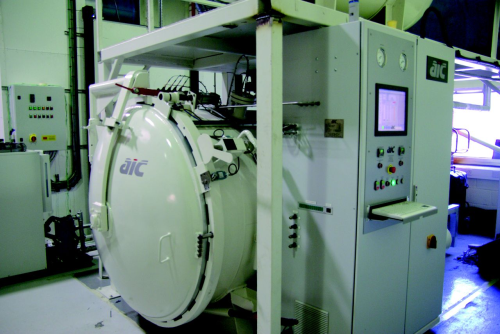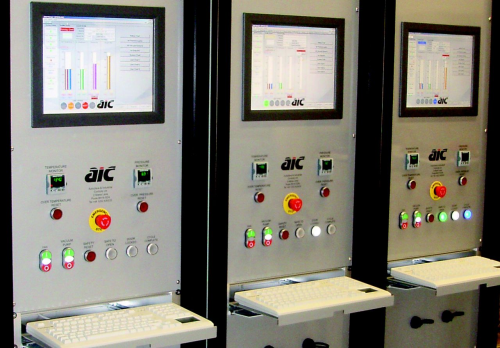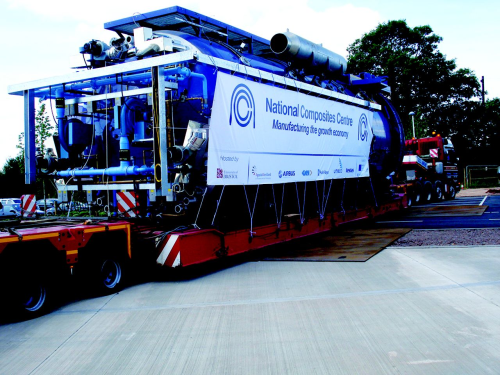


Servicing. Maintenance. There is something soporific about those two words. What do they make you think of? Do they remind you of the annual reminder you receive from your local garage about your car’s annual or 12,000 mile service? What do you think of when you open the envelope?
If you’re anything like me, on one hand you’ll be glad to be reminded; on the other you’ll be dreading putting your car into the garage for what seems like a simple job and then always ends up costing hundreds of pounds more than you’d expected or budgeted for.
Certainly my experience this year was a fairly bad one when I received a phone call from my local garage while I was on holiday in France. They told me that the service and MOT (the UK’s annual test to ensure that a vehicle meets road safety and environmental standards) had thrown up that I needed a new fuel tank. Cost £700. The car isn’t worth anywhere near that. But I dutifully paid up and now have a (for the moment) functioning car which gets me from A to B.
And that, I suppose, is why I put my car through the expensive service and MOT. Firstly I don’t want to break down on the motorway and servicing will reduce the risks of this. Secondly, for the MOT, I’m legally required to do so.
For heavy plant, such as autoclaves and hot drape formers, this is even more the case. In a busy production line, lean manufacturing doesn’t allow for an extra autoclave, and losing this important piece of machinery can put a whole factory out of operation for days or, if a new part is needed, it could be weeks or evens months.
AIC Group specialises in the production and maintenance of heavy plant such as autoclaves, ovens, presses and hot drape formers. It is responsible for Planned, Preventative Maintenance (PPM) programmes for a number of high profile companies and recently announced five year contracts to a value of £560,000.
These contracts will maintain and service, and ensure safe and efficient running of:
- a global engineering group’s six autoclaves, and calibrate them to Aerospace Pyrometry Standard AMS 2750D;
- Trelleborg’s steam autoclave, used in the manufacture of precision seals; and
- three Formula One (F1) teams’ autoclaves – used in the production of composite parts in the latest racing cars.
| "Unscheduled downtime of an autoclave can cost a company thousands of pounds per day in lost production." |
| Ian Simpson, AIC’s Service Director |
Ian Simpson, AIC’s Service Director, explains the importance of PPM:
“Minimising break-downs and downtime is vitally important to the reinforced plastics industry. For example, unscheduled downtime of an autoclave can cost a company thousands of pounds per day in lost production. A fan motor, which is often bespoke to each autoclave, can have a 16 week lead time. There are not many companies that can afford to have an expensive piece of plant out for this length of time.”
Legislation and standards
PPM increases the reliability of equipment, reduces downtime and interruptions to production and maximises asset utilisation. It contributes to operational cost savings by ensuring optimal energy efficiencies. PPM extends the life expectancy of capital plant and importantly ensures its safe condition, eliminating risks which can occur as a result of the deterioration or failure of the equipment.
There are a number of laws which apply to maintaining heavy plant. Autoclaves operate at high pressure and high temperature, so there is a long a list of them. In the UK, these include the Health and Safety at Work Act 1974, the Provision and Use of Work Equipment regulations 1998 (PUWER), and the Pressure System Safety Regulations 2000 (PSSR).
Let’s look at two of these in a little more detail.
PUWER
- requires frequent inspection and maintenance, either planned preventative or condition-based;
- must be undertaken by competent persons, who will receive written instructions to a prescribed format, and will be regularly trained in plant operation and health and safety.
PSSR
- a suitable maintenance programme must be planned, including for the system as a whole;
- a ‘written scheme of examination’ is required, which must be drawn up by a competent person;
- the written scheme of examination is an ‘MOT’, according to the UK’s Health and Safety Executive (HSE).
Running in parallel to the legislation are various industry quality standards, all of which require regular, planned maintenance, such as Nadcap (the industry-managed programme for special processes in the aerospace industry). For many of the aerospace primes, if you don’t have these, they can’t grant you business.
It makes sound economic sense to avoid loses due to plant failures and production loses due to increased downtime. And if quality reasons aren’t enough to convince you of the need for Planned, Preventative Maintenance, then falling foul of those statutes should be. They are quite specific in what they require.
Servicing
What’s involved in servicing? Servicing gives a systematic inspection of the equipment and a detailed report on its condition with recommendations to ensure reliability by replacing worn components before they fail. It includes preventative maintenance to prolong the operational reliability and life expectancy of the plant.
Let’s now consider an autoclave. Because these are so large, servicing usually takes place in situ. The only item of equipment which is taken away is the safety valve, and as companies will have a spare, this doesn’t affect the running. However servicing will need to be carried out routinely and regularly, depending on usage.
It is best practice to service frequently, sometimes as often as once a quarter. Servicing schedules can be brought forward if the environment changes. For example in the production line of one major aerospace manufacturer, an aluminium fettling machine was placed next to the autoclave. This disrupted the autoclave’s burners, meaning the interval between services had to be significantly reduced.
Communication is key
“The first thing we do is to walk around the plant keeping our eyes and ears open,” explains Simon Keen, service engineer from AIC. “We get a feel for what’s going on, not just for the piece of kit, but also for the whole operation. We’ll then liaise with the client to check their schedule and talk about how the service will take place, in order to maintain efficiency and minimise downtime.”
“They might want the machine back at night to continue production, while some larger companies will schedule this downtime into their production, thinking it better to have it scheduled than for a breakdown to occur in the middle of a busy production run.”
With PPM there is a strong focus on cleaning. Plant can become dirty during normal operation. Cleanliness gives efficiency of operation, preventing debris entering into key components, which increases life expectancy and reduces the need for emergency call-out. Another important aspect of PPM is Temperature Uniformity Surveys (TUS). TUS assess if heated air flows are balanced to achieve uniformity of temperature across many components.
A PPM checklist for an autoclave looks something like:
- pressurising system – check overall condition, drain condensate, change filters/strainers if required, inspect for oil carry-over, test isolation valves, replace safety valves/bursting discs;
- gas heating – clean burners and fans,
- test combustion levels, inspect burner attachments, test for gas leaks;
- electric heating – inspect thyristors, examine connections, test earth-bonding and insulation resistance;
- water cooling – check system is secure and water-tight, replenish coolant, remove debris, check and clean strainers, inspect flexible connections, test flow-rates;
- main fan – lubricate motor, test insulation resistance, inspect drain points, inspect fan attachment;
- door mechanism – inspect for signs of wear, clean inspect and lubricate locking surfaces, examine ring concentricity, ensure all blocks and bolts are securely tightened, check hydraulics are clean, free of leaks and topped up, check door height, grease pin collector and linear roller bearings, test all interlocks/switch functions, check warning light and siren;
- vacuum system – test for leaks, examine hoses, clean valves and test function, replace vacuum pump oil and filters, test vacuum gauges;
- thermocouple connections – test integrity of leads, inspect pressure seals;
- internal lights – check bulbs;
- nitrogen operation – test oxygen (O2) analyser function, test purge function;
- safety – test function of E-Stop, over-temperature, over-pressure and man-in-vessel alarms;
- general – replace panel dust filters, remove debris from inside, check for damaged cladding, check frost protection operation, check computer disk for space and errors, check recent performance charts.
Once that has been completed, the whole system needs to be calibrated. It needs to be operating accurately at the temperature, pressure and vacuum that the instruments indicate. This fine tuning is an integral part of the service. And once it has been completed, a calibration certificate will be issued confirming the results.
Calibration
Calibration is a key factor in ensuring the energy efficiency and optimal performance of equipment. It contributes significantly towards reduction in process times and elimination of scrapped components, as well as meeting quality assurance standards. For some companies, calibration needs to be UKAS (United Kingdom Accreditation Service) accredited (compliant with ISO 17025 – Competence of Testing and Calibration Laboratories) rather than just traceable.
| Calibration is a key factor in ensuring the energy efficiency and optimal performance of equipment. |
Others require calibration to industry standards. For example for aerospace, BS 2M 54 or AMS 2750 certification may be relevant. Quality standards stipulate that calibration techniques of sensors such as thermocouples must comply with IEC 60584 or ASTM E220 with the whole calibration chain assured back to international standards.
Regular calibration by a qualified engineer is essential to ensure that you produce a quality product at maximum efficiency every time.
All this work needs to be fully documented, as this forms part of the regulatory compliance regime and will also inform future PPM activities.
A highly skilled operation
Servicing and maintaining heavy plant such as ovens, which are so important to the reinforced plastics industry, is a highly skilled operation. Just as you wouldn’t want a Formula 1 driver to service your car, the best people to service this plant aren’t those who operate it. They are highly skilled, highly knowledgeable and highly experienced engineers. They know the kit inside-out and often can manufacture a piece of plant as well as maintain it. For example AIC have over 40 years’ experience of servicing heavy plant.
Having said that, in-house teams have a key role to play in first-line maintenance and AIC enables them to play this role. The company provides maintenance training to its contract customers and has invested in £30,000 worth of electrical CAD software so that intelligent drawings can be supplied with control system upgrades – greatly facilitating fault-finding.
The whole area of PPM requires a multi-disciplinary team of qualified engineers with unique skills-sets, who can detect and correct developing failures before they occur and well before they develop into major defects needing costly repairs. They are different from a company’s own manufacturing staff who usually aren’t that interested or skilled in how the piece of plant works.
In-house service departments are helpful but usually have a wide range of equipment to look after and can’t be experts in all plant. Also for in-house teams, breakdowns will always be prioritised over planned maintenance which means regular servicing can be left behind, with some cases of companies not servicing for 18 months or more.
And the market for servicing is growing internationally. AIC is continuing its expansion into Asia with the opening of an office in Singapore to enable it to deal with the growing demand for support services for autoclaves and other composite process equipment in China, Singapore, Malaysia and Thailand.
The AIC Singapore office has a dedicated 24/7 engineering capability and a small sales force. It will particularly target the composites industry, as the market in Asia is expected to contribute over half of worldwide composite production by 2015, with a current estimated value of almost $25 billion.
A worthwhile investment
Hopefully all that hasn’t sent you to sleep but given a better understanding of PPM. Servicing is something many of us don’t like investing in or thinking about. But the risks of not doing so are extremely serious, not least to the factory’s operating efficiency and to operator safety. In pressurised systems in order to preserve reliability, plant life and increase productivity and adhere to the legal and health and safety requirements, keep servicing front of mind. •
This article was published in the November/December 2012 issue of Reinforced Plastics magazine.


